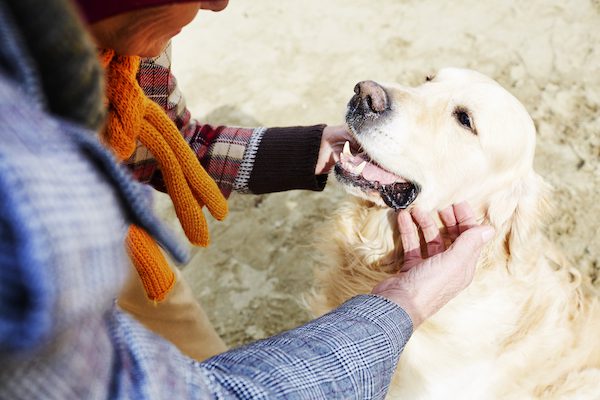 Last month (Aug, 2019) the U.S. Department of Transportation officially added miniature horses to their list of service animals permitted on flights. “The Enforcement Office intends to use available resources to ensure that dogs, cats, and miniature horses are accepted for transport,” they said.
Last month (Aug, 2019) the U.S. Department of Transportation officially added miniature horses to their list of service animals permitted on flights. “The Enforcement Office intends to use available resources to ensure that dogs, cats, and miniature horses are accepted for transport,” they said.
We’ve come a long way since the days when a seeing-eye dog was the only service animal you’d find on a plane, in a restaurant, or at a shopping mall. While some people think this has all gone too far, the benefits provided by many animals are undeniable. Dogs, in particular have proven to be excellent helpers for people with both physical and emotional disabilities.
According to the American Kennel Club, in addition to helping the blind, dogs can be trained to help the deaf and “work with people who use wheelchairs, have balance issues, have autism, need seizure alert or response, need to be alerted to other medical issues like low blood sugar, or have psychiatric disabilities.”
When dogs are trained to assist people with disabilities or medical diagnoses like these, they are designated as service animals. Though this term is often used loosely, it is important to distinguish a service animal from an assistance animal (sometimes called an emotional support animal). Assistance animals, unlike service animals, are untrained animals, often pets, that provide emotional comfort just by their presence.
Service Animals
The Americans with Disabilities Act defines a service animal as a dog (though some miniature horses qualify) trained to, “do work or perform tasks for people with disabilities.” A service animal is not considered a pet and must be allowed to accompany someone with a disability anywhere the public is allowed to go. The animal must be well controlled and housebroken.
Assistance Animals
An assistance animal does not need to do any tasks or jobs, and it is not covered by the Americans with Disabilities Act; you don’t have the right to take them into a restaurant, for example. An exception is made, however, when it comes to housing. According to The Fair Housing Act, “Even if a lease says ‘no pets’ or restricts pets, landlords are required to make what is called a ‘reasonable accommodation’ to allow pets who serve as assistance animals, which includes animals who provide emotional support.”
Service animal and assistance animal are legal distinctions established by the federal government but interpreted by individual states. Generally, you can have a dog you already own designated as an assistance animal just by getting a letter from your doctor, explaining how your pet is needed to help with a disability.
Getting a service animal is a much more complicated and often longer process. Service dogs can be limited to specific sizes and breeds, and they have strict training requirements. The American Kennel Club estimates that training a service dog typically takes two years and can cost upwards of $25,000. They recommend the organization Assistance Dogs International to learn more about getting a service animal because there is a fair amount of fraud in this arena:
Because service dogs have public access into restaurants, stores, and the cabin area of airplanes, some people obtain fake service dog credentials just because they want their dog to be with them. This practice is unethical and detrimental to the well-being of working service dogs.
Without a doubt, animals can be of great service to us. Service animals can open doors and they can even save lives. Assistance animals can be a great comfort and improve your quality of life. Either are worth looking into and talking to your doctor about.
If you feel better when you are with your dog, and you have a valid medical reason for this, your doctor may be able to help you get around that no-pet rule in your apartment building. If you have a disability that requires more than just comfort, a specially trained service dog might be the better option.
If it turns out that a miniature horse is an even better fit than a dog for your disability, you might just be glad the Department of Transportation will let you bring it on a plane. Just know though, they still allow airlines to deny transport to snakes, rodents, and spiders, for emotional support or otherwise.

